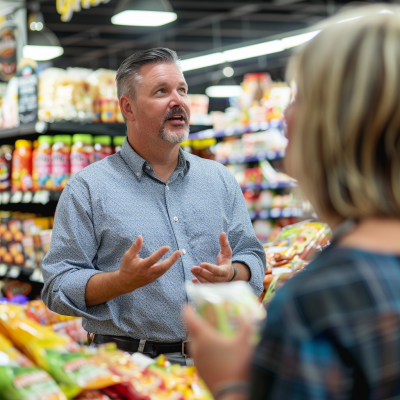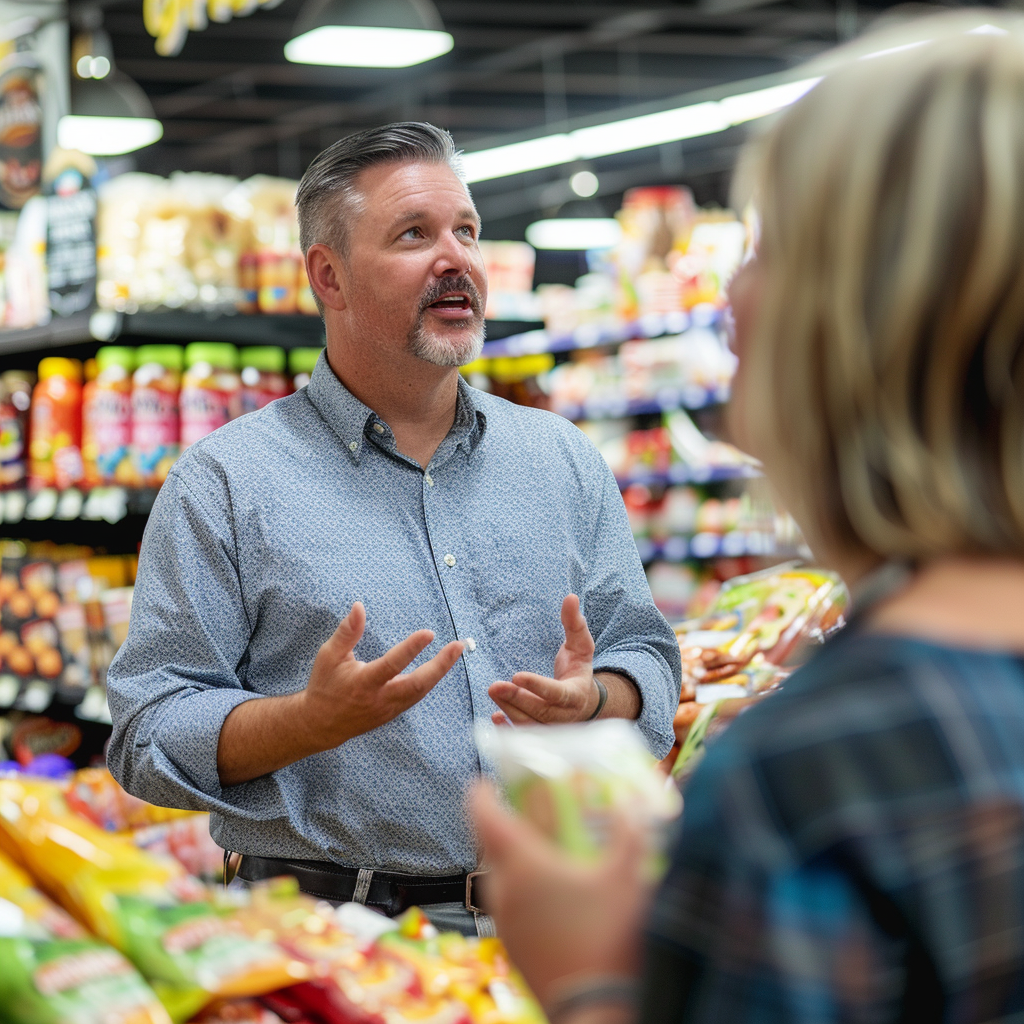Table of Contents
Table of Contents
Exploring the external factors influencing the grocery sector is crucial for businesses striving to thrive in a dynamic market. A grocery store PEST analysis acts as a key tool in this exploration, providing insights to guide supermarkets towards success.
What is a grocery store PEST analysis?
A PEST analysis for grocery stores delves into the external factors that impact this industry significantly. This analysis is essential in navigating the changing landscape of the grocery sector, marked by intense competition, evolving consumer preferences, and rapid technological progress. It focuses on four main areas:
- Political: The sector is influenced by regulations on food safety, import–export tariffs, and labor laws. These factors can significantly affect operational costs and product sourcing strategies.
- Economic: Trends like inflation, disposable income levels, and the volatility of food prices play a crucial role in consumer spending and demand, as well as shoplifting. Adapting pricing, security, and inventory strategies in response to these trends is vital.
- Sociological: Shifts in consumer lifestyles, dietary preferences, and demographics dictate demand for various products and shopping experiences. Grocers must align their offerings and marketing to meet these changing needs.
- Technological: Advancements in supply chain logistics, online shopping, AI video analytics, and payment methods are reshaping the grocery shopping experience. Keeping pace with these technologies is key to maintaining efficiency and customer satisfaction.

PEST vs PESTLE
Adding legal and environmental factors to the analysis offers a broader understanding crucial for grocery stores.
- Legal: Staying compliant with health and safety, employment, and data protection regulations is crucial for maintaining smooth operations and a strong reputation.
- Environmental: Practices in sourcing, packaging, and waste management, driven by consumer and regulatory demands for sustainability, are becoming increasingly important for grocery stores.
Grocery store PEST analysis examples
Adapting to external factors is critical for growth and resilience in the grocery industry. PEST analysis illuminates these factors through specific scenarios:
- Sustainable sourcing initiatives
- Adoption of e-commerce platforms
- Response to economic fluctuations
Grocery store PEST analysis 1: Sustainable sourcing initiatives
The increasing consumer demand for environmentally friendly and ethically sourced products is pushing grocery stores to reevaluate their sourcing strategies. This shift towards sustainable sourcing reflects broader societal and environmental trends, requiring stores to navigate the complexities of global supply chains, ensure compliance with sustainability standards, and communicate their efforts effectively to consumers.
Implementing sustainable sourcing initiatives can differentiate a grocery store in a competitive market, fostering customer loyalty and aligning with regulatory trends towards environmental stewardship.
Here is the grocery store PEST analysis:
- Political: Navigating global supply chain complexities and aligning with regulatory trends towards environmental sustainability are key.
- Economic: Sustainable sourcing can command higher prices but also foster customer loyalty and market differentiation.
- Sociological: Consumer preference for environmentally friendly products is shaping market demand.
- Technological: Advances in supply chain transparency and sustainability metrics are vital.
- Legal: Compliance with environmental standards and certifications is necessary.
- Environmental: Reducing the carbon footprint and promoting eco-friendly packaging are critical components of sustainable sourcing.
Grocery store PEST analysis 2: Adoption of e-commerce platforms
The rise of online shopping has revolutionized the grocery sector, compelling traditional stores to integrate e-commerce platforms into their business models. This digital transformation responds to technological advancements and changing consumer behaviors, emphasizing the need for grocery stores to offer convenient online shopping options, robust delivery networks, and seamless customer experiences.
The adoption of e-commerce platforms not only expands a store’s market reach but also presents operational challenges and opportunities for data-driven customer engagement.
Here is the grocery store PEST analysis:
- Political: Adherence to e-commerce regulations and data protection laws is essential.
- Economic: E-commerce offers the potential for market expansion but requires significant investment in technology and logistics.
- Sociological: Consumer demand for convenience and fast delivery options drives the growth of online grocery shopping.
- Technological: Implementing user-friendly online shopping platforms and efficient delivery systems is crucial.
- Legal: Ensuring online transactions comply with consumer protection laws is vital.
- Environmental: Online shopping can reduce the carbon footprint but also raises questions about packaging waste and delivery emissions.
Grocery store PEST analysis 3: Response to economic fluctuations
Economic conditions play a significant role in shaping consumer spending patterns in the grocery sector. Fluctuations in disposable income, inflation rates, and food prices can impact consumer demand and purchasing decisions.
Grocery stores must remain agile, adjusting their pricing, promotion, and product assortment strategies to maintain customer loyalty and manage costs effectively during economic downturns or periods of prosperity. Understanding and responding to economic indicators can help grocery stores navigate these fluctuations and sustain their business performance.
Here is the grocery store PEST analysis:
- Political: Government economic policies and stimulus measures can affect consumer spending power.
- Economic: Price sensitivity becomes more pronounced during economic downturns, requiring stores to adjust pricing strategies and implement cost-saving systems including self-checkouts.
- Sociological: Economic shifts can lead to changes in consumer priorities, with a focus on essential goods and value-for-money.
- Technological: Technologies such as grocery store security cameras can offer solutions to optimize operations, prevent theft, and reduce costs in response to economic pressures.
- Legal: Economic downturns may lead to changes in labor laws affecting staffing and operations.
- Environmental: Consumer interest in sustainability can be influenced by economic conditions, affecting demand for eco-friendly products.
Solink and grocery industry: Navigating complexities together
The grocery industry is influenced by a complex interplay of political, economic, sociological, technological, legal, and environmental factors. Solink’s innovative solutions provide grocery stores with the analytics and insights needed to navigate these complexities, enhancing strategic decision-making and operational efficiency.
By leveraging Solink, grocery stores can adapt to external changes, seize growth opportunities, and meet evolving market demands effectively.
